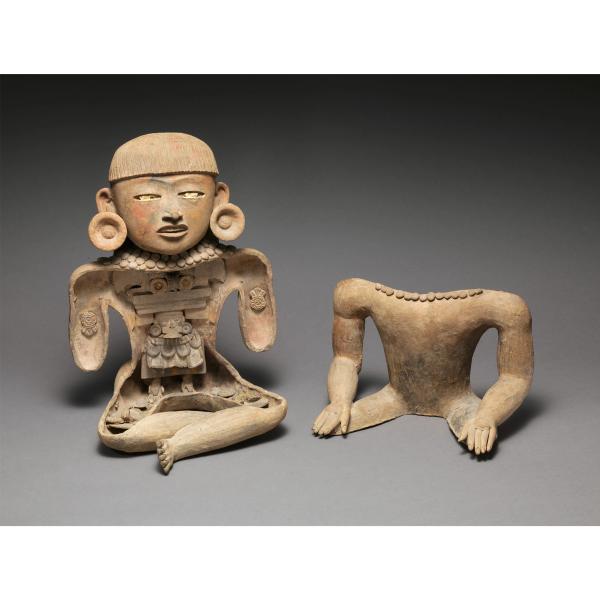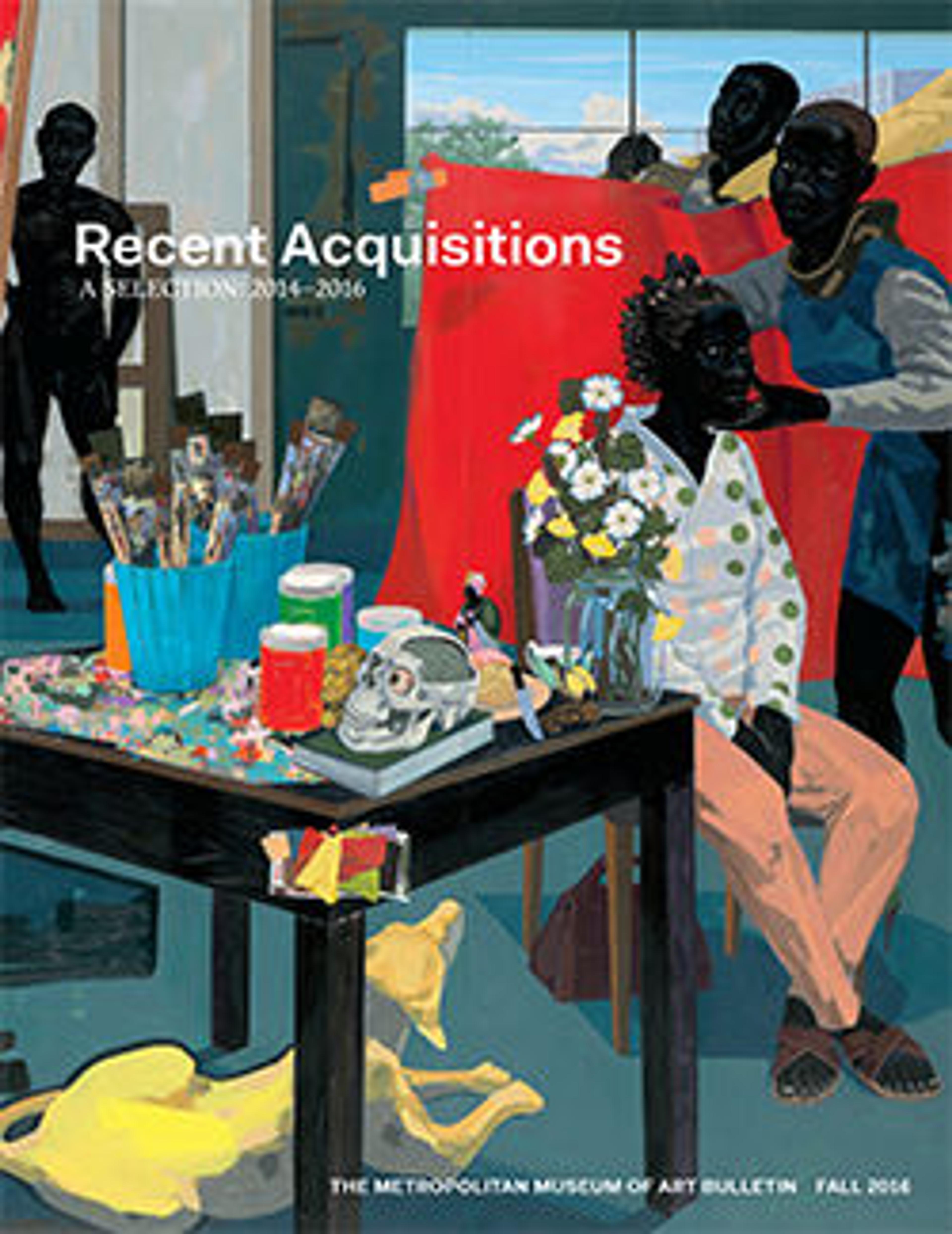Host figure
This composition comes from the Pacific Coast region of Guatemala. The style of this work, known as a "host" figure, connects it to the great Mexican city of Teotihuacan—a site nearly seven hundred miles northwest—where this type of hollow figure is thought to have originated. Host figures may have been deployed in intimate ritual activities, with the interior figurines revealed at certain moments. Such figures may speak to ancient Mesoamerican ideas of personhood and the divine, hinting at beliefs that there was an essence that resided inside humans, be they ancestors, deities, or natural forces.
Further Reading
Architectural Digest (June 1981), cover; p. 106.
Berjonneau, Gerald, Emile Deletaille, and Jean-Louis Sonnery. Rediscovered Masterpieces of Mesoamerica: Mexico-Guatemala-Honduras. Boulogne: Editions Arts 135, 1985, no. 153, p. 118.
Berrin, Kathleen, and Esther Pasztory, eds. Teotihuacan: Art from the City of the Gods. New York and San Francisco: Thames & Hudson Inc., 1993, no. 66, pp. 214–215.
Hellmuth, Nicholas M. The Escuintla Hoards: Teotihuacan Art in Guatemala. F.L.A.A.R. Progress Reports, Vol. vol. 1, no. 2. Guatemala City: Foundation for Latin American Anthropological Research, 1975, p. 58, Plate 42A-B.
LaGamma, Alisa, Joanne Pillsbury, Yaëlle Biro, and James Doyle. "Recent Acquisitions: A Selection: 2014–2016." The Metropolitan Museum of Art Bulletin (Fall 2016), p. 16.
Ferber, Andrea L., Ph.D. "Collections: The Metropolitan Museum of Art." First American Art no. 23 (Summer 2019), p. 101.
Artwork Details
- Title: Host figure
- Artist: Teotihuacan or Maya artist(s)
- Date: 550–650 CE
- Geography: Guatemala, Tiquisate region, Escuintla
- Culture: Escuintla
- Medium: Ceramic, pyrite, pigment
- Dimensions: H. 14 3/4 × W. 10 3/4 × D. 10 1/4 in. (37.5 × 27.3 × 26 cm)
- Classification: Ceramics-Sculpture
- Credit Line: Partial and Promised Gift of Linda M. Lindenbaum, from the Collection of Samuel H. and Linda M. Lindenbaum, 2015
- Object Number: 2015.226a, b
- Curatorial Department: The Michael C. Rockefeller Wing
Audio

1633. Host figure, Teotihuacan or Maya artist(s)
David Carballo and Oswaldo Chinchilla
DAVID CARBALLO: Pieces like these are known as host figurines because they have other little figures inside the principal figure, the hollow figure. One in the chest, two in the legs, and one in the front piece of the chest. They're all extremely richly attired. My name’s David Carballo. I'm a professor of anthropology, archaeology, and Latin American Studies at Boston University.
JOSÉ MARÍA YAZPIK (NARRATOR): This intricate sculpture depicts a seated young man. His breastplate is designed to be removed, like the lid of a box. Look closely at the hollow figure: just below the neck you’ll see two delicate circles, which represent the eyes of a butterfly. The host form and butterfly imagery are typical of the great inland metropolis of Teotihuacan, one of the largest cities in the world in the first millennium.
DAVID CARBALLO: You typically see butterflies with these big goggle eyes and a proboscis coming out from between them. Butterfly imagery is associated with a flowery afterlife for those who died valiantly - warriors who died on the battlefield, but also women who died in childbirth. And, those people enjoyed a paradise afterlife, their souls were reincarnated as butterflies or birds.
JOSÉ MARÍA YAZPIK: How the host figures were used, and what they mean, remain unknown. The small beings inhabiting the main figure might be representations of valor or leadership—of the power of the empire based in Teotihuacan. Or they might be ancestors, or deities. Oswaldo Chinchilla, archaeologist and professor of anthropology, Yale University.
OSWALDO CHINCHILLA: The human body is conceived as a shrine of sorts, as an embodied shrine which could serve to hold the effigies and perhaps the essences of deceased ancestors or deities.
JOSÉ MARÍA YAZPIK: While the host figure is rendered in the style of Teotihuacan, it was found far from that great city.
DAVID CARBALLO: This particular one comes from the Esquintla region of the Pacific coast of Guatemala, so many hundreds of miles away, and speaks to the long relations and connections that the city had with other parts of Mesoamerica.
More Artwork
Research Resources
The Met provides unparalleled resources for research and welcomes an international community of students and scholars. The Met's Open Access API is where creators and researchers can connect to the The Met collection. Open Access data and public domain images are available for unrestricted commercial and noncommercial use without permission or fee.
To request images under copyright and other restrictions, please use this Image Request form.
Feedback
We continue to research and examine historical and cultural context for objects in The Met collection. If you have comments or questions about this object record, please contact us using the form below. The Museum looks forward to receiving your comments.
